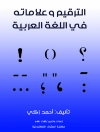This book is an interdisciplinary study of the engagement with and representation of the face across literature, photography, and theatre. It looks at how the face is an active agent, closely connected with the history of the media and the social interactions reflected in media images. Focusing on the dynamic period of the interwar years, it explores a range of case studies in Poland, UK, and the US, and examines artists like Stanisław Ignacy Witkiewicz (Witkacy), Virginia Woolf, Debora Vogel, Sir Cecil Beaton, Theodore Władysław Benda, and Edward Gordon Craig. Teresa Bruś argues that these writers and photographers defended the face against threats from modern life – not least, the media. She focuses on transformations of the face in life writing across a range of media and draws attention to the artists’ autobiographical narratives.
Inhaltsverzeichnis
Chapter 1: Commitment to Face.- Chapter 2: Stanisław Ignacy Witkiewicz: The Increase and Excess of Facial Expression.- Chapter 3: Virginia Woolf and Debora Vogel: A Season of Fragments .- Chapter 4: False Faces of Władysław Teodor Benda and Edward Gordon Craig..- Chapter 5: Sir Cecil Beaton and the Art of Modern Façade.- Chapter 6: Massification of Faces in Lilliput and Picture Post .- Chapter 7 Conclusions.
Über den Autor
Teresa Bruś is Associate Professor in the Institute of English Studies at Wrocław University, Poland. She has published on various aspects of life writing and photography in journals, including Biography, European Journal of Life Writing, Prose Studies, and Connotations. She is the author of Life Writing as Self-Collecting in the 1930s: Cecil Day Lewis and Louis Mac Neice (2012).












